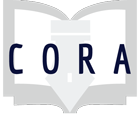Assignment
Library Database Teach-In
Rather than just providing a 20min presentation on academic databases available through the library website--this lesson is designed to have students demonstrate using library databases for their classmates. Delivered to our ENG 1B (a required freshman course) students, and timed to coincide with their Argument Essay assignment, students practice accessing and utilizing databases to find information sources. Working in groups, the students explore an assigned database before coming up to the podium to demonstrate the materials, search functionality and features of that database. Lesson break down (1hr 15min): Presentation by the Librarian: databases; developing keywords; Boolean (30 minutes) Students break into groups of 2-4, are assigned a database (5 minutes) Students explore the database and plan their Teach-In (10 minutes) Groups present on their assigned database (20 minutes) Presentation by the Librarian about identifying information needs (5 minutes) Librarian re-states the role of each database to meet these information needs (5 minutes) *This lesson was first designed by CORA Development Group Member, Nicole Branch along with SJSU Librarian, Toby Matoush.
Accessing library databases Using the library databases to identify and select information sources Understanding the role of each database (accessible materials) within the research process Developing search terms Using Boolean operators to broaden or narrow the scope of a search
Information Literacy concepts:
Individual or Group:
Ability Level:
This lesson is delivered to all sections of our ENG 1B course, which is required in their freshman year, to coincide with their Argument Essay assignment. As part of their assignment, students have to provide evidence in support of their argument from scholarly sources. This lesson features the library's "go-to" databases for accessing reference sources, ebooks and scholarly articles for their assignment.


Comments
I think this is an effective
I think this is an effective way for students to engage on a deeper level with a particular database. It can also be more meaningful to have students present each other the database information. Including the quiz is also a great way to encourage all groups to engage with the presentations. Adding a set of requirements or outcomes you expect student groups to deliver in their presentations will help direct students to explore the limits of the database as they evaluate its content and features, and prepare the presentation for their classmates. In addition, I find that providing feedback to each group after they deliver their review/evaluation of a database gives the instructor an opportunity to underscore what has been said, and/or to extend it by pointing out other features or processes that could be useful when searching in the database. Having students demonstrate a feature they may have overlooked in their presentation helps them learn it, but also may make more of an impact on those listening to and learning from the presentation.
I completely agree that the
I completely agree that the opportunity to provide feedback and reinforce how the students may use the database for their assignments is a key component of the presentations. If I can give potential users a bit of advice about providing feedback--its helpful to gauge ahead of time whether the instructor for the course will want to be the one providing direction or interjecting during student presentations...or whether they will defer to you as the librarian.
Thanks for adding this!
Thanks for adding this!
How do you think this would
How do you think this would work if you pared down the 30 minute presentation by skipping the Boolean instruction and database descriptions, and let the groups discover what they can through trial and error on their own? That would give more time for the student presentations, where you could give comments that would cover the material that was removed from your 30 min presentation - or whatever parts of it they didn't discover on their own? I'm never sure where to strike the balance between the messiness of discovery learning and the clarity of orderly explanations......
This may not be the case with
This may not be the case with your students, but I found that most of our freshman students have never used search terms...they have always relied on typing fully formed questions into a search box. Thus, a big part of the lesson is getting them to start thinking about how to create relationships between words outside the context of an actual sentence.